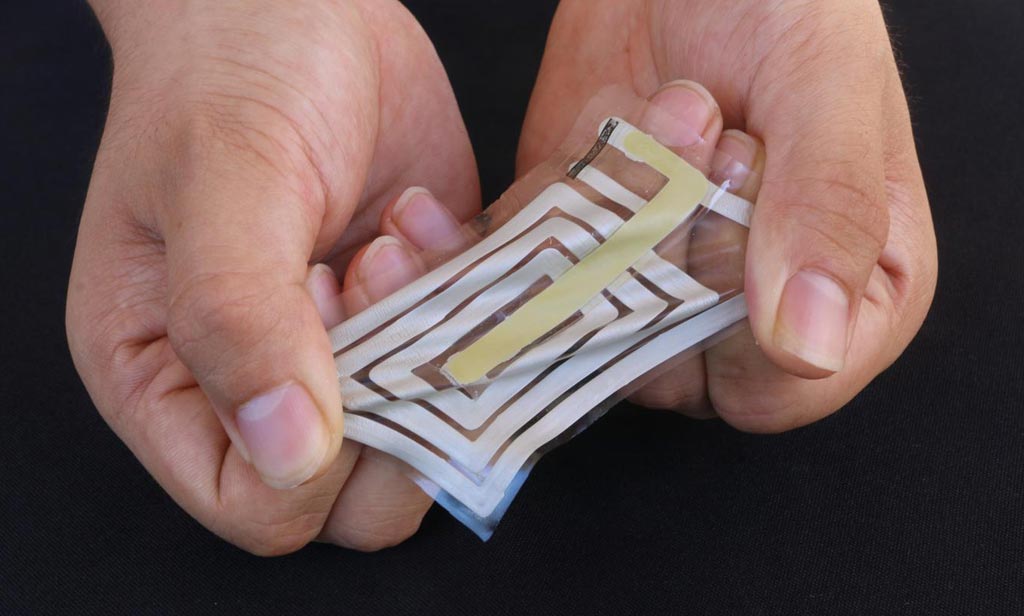Study Supports Body Area Sensory Networks for Diagnostic Monitoring
By LabMedica International staff writers
Posted on 26 Aug 2019
The first steps have been taken on the path leading to development of a body area sensor network, which is a collection of networked sensors that can be used to remotely monitor human physiological signals.Posted on 26 Aug 2019
For its application in next-generation personalized healthcare systems, stretchable on-skin sensors have to be seamlessly meshed with rigid silicon readout circuits. Toward this end, investigators at Stanford University (Palo Alto, CA, USA) devleoped a body area sensory network (a bodyNET) composed of chip-free and battery-free stretchable on-skin sensor tags that were wirelessly linked to flexible readout circuits attached to clothing. This design offered a conformal skin-mimicking interface by removing all direct contacts between rigid components and the human body. Thus, this design addressed the mechanical incompatibility issue between soft on-skin devices and rigid high-performance silicon electronics.

Image: Researchers used metallic ink to screen-print an antenna and sensor onto a stretchable sticker designed to adhere to skin and track pulse and other health indicators, and transmit these readings to a receiver on a person\'s clothing (Photo courtesy of Bao Lab, Stanford University).
For communications between the skin sensors and the clothing-bound receivers, the investigators introduced an unconventional radiofrequency identification technology where the wireless sensors were deliberately detuned to increase the tolerance of strain-induced changes in electronic properties. Thus, the bodyNET comprised chip-free and battery-free stretchable on-skin sensor tags, which had been screen-printed with metallic ink, that were wirelessly linked to flexible readout circuits attached to textiles.
The investigators used this prototype bodyNET to simultaneously and continuously analyse an individual’s pulse, breath, and body movement.
Ultimately, it is intended that this technology evolve into a device that would be comfortable to wear and have no batteries or rigid circuits to prevent the body sensors from stretching and contracting with the skin in response to changes in the subject’s physiology.
"We think one day it will be possible to create a full-body skin-sensor array to collect physiological data without interfering with a person's normal behavior," said senior author Dr. Zhenan Bao, professor of chemical engineering at Stanford University.
The bodyNET concept was discussed in a paper published in the August 15, 2019, online edition of the journal Nature Electronics.
Related Links:
Stanford University




 assay.jpg)







